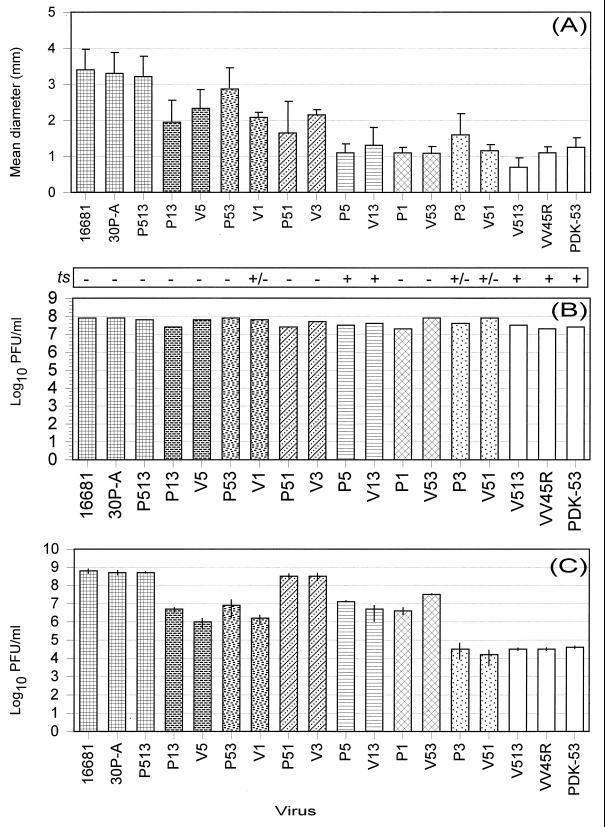FIG. 1.
(A) Mean plaque diameters ± standard deviation (n = 12) of DEN-2 16681, PDK-53, and recombinant 16681/PDK-53 viruses at 9 days after infection in LLC-MK2 cells. (B) Peak replication titers at 6 to 8 days after infection of LLC-MK2 cells at an MOI of approximately 0.001 PFU/cell in a single experiment. Temperature sensitivity (ts) scores for viruses grown at 37 or 38.7°C in LLC-MK2 cells are shown above the graph bars for peak replication titers. Scores of −, +/−, and + indicate less than 81, 81 to 89, and 90 to 97% reduction in viral titer, respectively, at 38.7°C. Scores were determined at 8 days after infection. (C) Average peak replication titers at 12 days after infection of C6/36 cells at an MOI of approximately 0.001 PFU/cell in two independent experiments. Individual peak titers from the two experiments are indicated by vertical lines in each graph bar. For designations of recombinant Px and Vx viruses, see Materials and Methods. Cognate viruses are indicated in all three graphs by graph bars of identical solid or cross-hatching pattern. The cognate for P5 virus is V13 virus, assuming that the viral phenotype is determined predominantly by the 5′NC-57, NS1-53, and NS3-250 loci. Both P5 and V13 viruses contain the 5′NC-57-C (16681), NS1-53-Asp (PDK-53), and NS3-250-Val (PDK-53) loci within the genetic backgrounds of PDK-53 and 16681 viruses, respectively.

